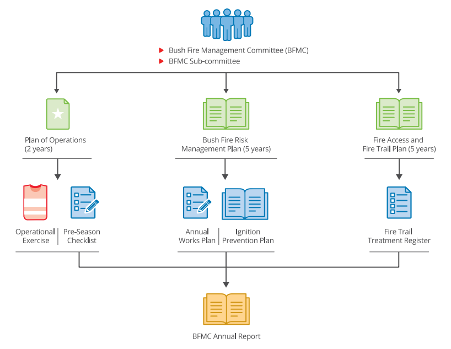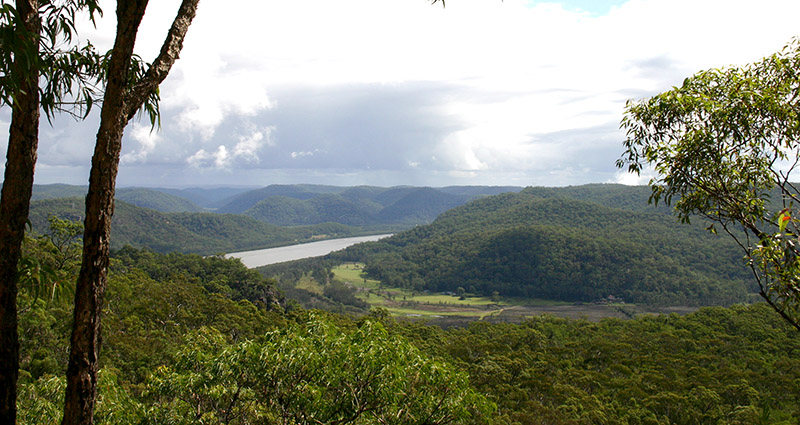Hornsby Ku-ring-gai Bush Fire Management Committee
The Hornsby Ku-ring-gai Bush Fire Management Committee (BFMC) consists of:
- Land Managers: Hornsby Shire Council, Ku-ring-gai Council, NSW National Parks and Wildlife Service, Department of Primary Industries Lands, Metropolitan Local Aboriginal Lands Council
- Fire and Emergency Authorities: NSW Rural Fire Service, Fire and Rescue NSW, NSW Police Force
- Major Infrastructure: Ausgrid, Transgrid, Transport NSW, Sydney Water
- Conservation Representatives: Nature Conservation Council
The BFMC is responsible for delivering bush fire management objectives for the local community. Under Section 52 of the Rural Fires Act 1997 the BFMC is required to prepare a:
- Plan of Operations: Which identifies Incident Management Team roles, key contacts and operational readiness arrangements for each Fire Danger Rating.
- Bush Fire Risk Management Plan (BFRMP)
- Fire Access and Fire Trail Plan (FAFT Plan)

Hornsby Ku-ring-gai Bush Fire Risk Management Plan
Councils’ response to bush fire risk management is guided by the Hornsby Ku-ring-gai Bush Fire Risk Management Plan (BFRMP). The plan identifies residential, special fire protection purpose, economic, cultural and environmental assets at risk from bush fire. It describes Focus Areas (identified for specific treatment due to significance of risk) and a register of coordinated multi-agency treatments to reduce bush fire risk over a five-year period.
Treatment strategies include fuel management (ie hazard reduction and asset protection zones), community preparedness, ignition prevention and response planning.
In accordance with the BFRMP the BFMC must:
- Prepare an Ignition Prevention Plan: Which identifies strategies to address the occurrence of deliberate bush fires within the BFMC area.
- Prepare an Annual Works Plan: To guide the BFMC in actions to take place within that year. The program is created to address the BFRMP treatment strategies inclusive of Fuel Management, Ignition Prevention, Community Preparedness and Response.
- Maintain, within the fuel management register, designated Neighbourhood Safer Places
Download the Hornsby Ku-ring-gai Bush Fire Risk Management Plan.
Hornsby Ku-ring-gai Fire Access and Fire Trail Plan
The Hornsby Ku-ring-gai Fire Access and Fire Trail (FAFT) plan provides for the identification, maintenance, certification and registration of fire trails for the purposes to prevent, fight, manage or contain bush fires.
The Bush Fire Coordinating Committee Policy for Fire Trails and the NSW Rural Fire Service Fire Trail Standards sets out the requirements for the preparations of these plans. FAFT Plans need to include a Treatment Register, which sets out a schedule for when works will be undertaken on identified priority trails.
The BFMC determines the importance of fire trails listed in the FAFT plan classifying them as either:
- Strategic – which holds the highest level of priority and value in the suppression and/or management of bush fires. These trails require certification by the Commissioner of the Rural Fire Service under the Rural Fires Act 1997.
- Tactical - support the prevention and suppression of bush fires by allowing access to localised areas. Tactical trails do not require certification, but landowners are required to maintain their level of operational confidence.
- Track/Other - vehicular tracks (other than Strategic and Tactical Fire Trails), within the landscape that may be used in the event of a fire.
Find more detail on the management of Councils fire trail network.







